Introduction
Eczema is nothing but bouts of intensely itchy blisters on the skin. It is usually found in adults of all ages. However, the severity varies from one person to the other. Also known as Eczema Dermatitis,
this inflammatory skin condition results in dry skin. The flare-up causes the skin to become red, sore, or even bleed. The disease is interchangeably referred to as “dermatitis” and is caused in different body areas like hands, neck, forearms, lower legs, etc.
For some, eczema can be chronic, with flare-ups taking a long time to subside. While others, like children, can expect their symptoms to ease with age.
Stages of Eczema
Eczema has three stages, namely:
-
-
Acute
This type of eczema occurs when the skin comes in contact with an irritant. It lasts for a few weeks until the skin gets better. The symptoms start with rashes and transform into bumps, itching, tenderness, swelling, pain, blisters, etc.
-
-
Subacute
In this phase, the skin has already started treating itself but has developed flare-ups again as it was left untreated. This is the transitional stage between acute and chronic and develops cracks, itching, burning, redness, stinging in the skin, and so on.
-
Chronic
This is the most common stage and is found in infants below one year of age. This stage lasts throughout life with occasional flare-ups. It eases with age. The symptoms of this type include lines in the skin, discoloured, dark skin, itching, cracks, etc.
Types of Eczema and Treatments
1. Atopic Dermatitis or Atopic Eczema
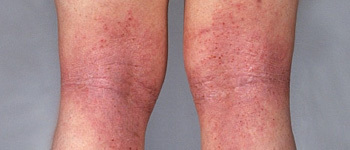
Most commonly occurs in hands, neck, elbows, face, hands, back of knees, but gets worse on scratching. Other than this, some irritants make the symptoms worse, like:
- Soap
- Wollen, heavy clothing
- Household chores
- Food
- Dust mites as allergy triggers
Other triggers of atopic dermatitis include:
- Sudden temperature changes ranging from low humidity to cold weather.
- Irritants like soaps, perfumes, detergents, and fragrances
- Fabrics like wool and synthetics
- Hormonal changes in females (before or during pregnancy)
- Food allergy
Treating Atopic Eczema
Use dermatological medications like corticosteroids, topical creams, or topical calcineurin inhibitors to relieve redness, itching, and dryness.
Apart from it, there are other OTC medications, like moisturising creams, anti-rash, anti-itch, and gentle skin cleansing products that can be used to avoid the risk of infections further.
2. Contact Dermatitis or Contact Eczema
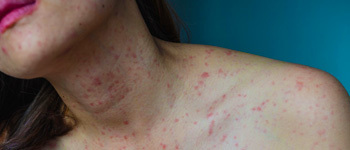
The two categories under which contact dermatitis fall are:
A) Irritant Contact Dermatitis

B) Allergic Contact Dermatitis

An individual may not react to the allergen on coming in contact for the first time. However, once they develop an allergy, they will persist for longer. Some examples of allergens include rubber, adhesives, dyes, makeup, other cosmetics, creams, metals,etc.
Treatment for Contact Dermatitis
In order to treat allergic triggers, the use of steroid drugs is encouraged. These can either be taken as pills or rubbed on the skin.
- Irrespective of the type of contact dermatitis, having antibiotics is a must.
- Make sure not to come in contact with the irritant.
- Wear gloves and ensure that your skin is guarded thoroughly.
- Other skincare tips you can follow are using the right moisturiser, especially after bathing. Apply the moisturiser as soon as possible after washing your hands.
3. Discoid Eczema
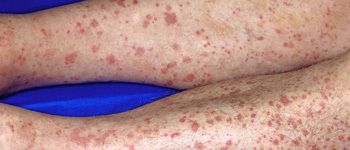
Discoid eczema is easily noticeable. It forms disc-shaped itchy, red, cracked, and swollen skin that appears typically on lower legs, forearms, and torso. Sometimes, the centre of the disc leaves a red-coloured ring. It can occur in people of any age,
specifically children. With other types of eczema, the causes are not fully known. But triggers include:
- Patched skin
- Skin burns
- Weather
- Bacterial infection
- Sensitivity to food
- Various allergic medications
4. Dyshidrotic Dermatitis
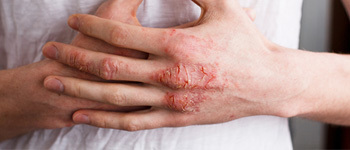
The initial symptoms include severe itching, which further leads to blisters that give rise to scaly patches. Sometimes deep cracks can also appear on the hands or fingers.
The symptoms are chronic and painful.
Treatments include:
- Cold, wet compresses
- Steroid drugs rubbed to the skin or consumed orally
- Psoralen with ultraviolet A therapy
5. Nummular Dermatitis
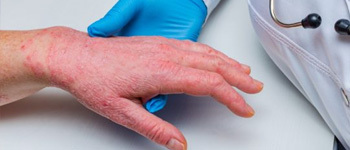
Nummular dermatitis leaves coin-shaped red-coloured marks on the back of hands, legs, forearms, hips, lower back, and so on. Some triggers of this type of eczema include dry air, cool wind, exposure to metals and chemicals, etc.
Treatments for nummular dermatitis include:
- Avoid scratching or other skin related injuries.
- Shower using lukewarm water. Immediately apply moisturiser after bathing.
- Apply a steroid ointment to the rash.
- Taking antibiotics in severe cases also helps.
Identifying whether you have eczema can be a little challenging. Thus, it is advisable to
consult your dermatologist, who will analyse your skin and know about the symptoms and health history. Based on the data, you’ll be able to conclude.
Skin Care Tips
Skincare is a must for treating eczema. If the symptoms are mild, all you need is some simple skincare hack. However, for severe eczema, you may need some medications as well.
Essential skincare tips you must follow are:
1. Use a mild soap that won’t dry your skin.
2. A good moisturiser or lotion is again a must-have.
3. Smooth your skin right after the shower.
4. Don’t take showers of over 15-20 minutes. This can dry out your skin even more.
5. Avoid getting exposed to dry air often.
If your dermatologist recommends medicine, you may include OTC ointments, corticosteroids, UV light therapy. These can ease out symptoms. Follow your dermatologist to get effective and reliable results.
If you have recently noticed skin rashes, we can help you determine the best treatment, help identify specific triggers, and craft an appropriate treatment plan. Schedule an appointment today!

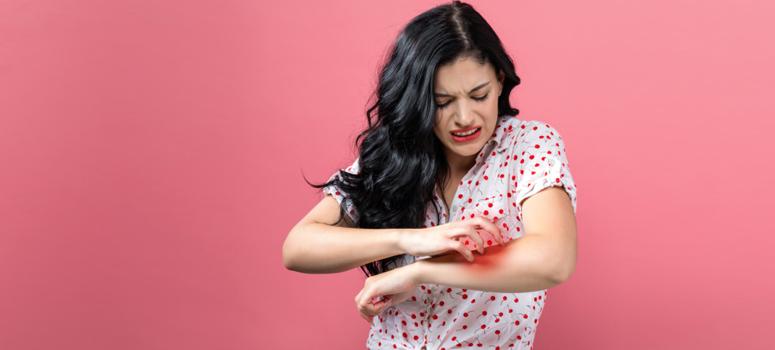
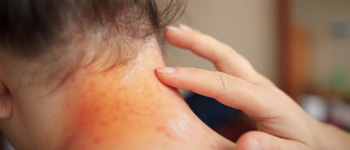 This type of eczema occurs when the skin comes in contact with an irritant. It lasts for a few weeks until the skin gets better. The symptoms start with rashes and transform into bumps, itching, tenderness, swelling, pain, blisters, etc.
This type of eczema occurs when the skin comes in contact with an irritant. It lasts for a few weeks until the skin gets better. The symptoms start with rashes and transform into bumps, itching, tenderness, swelling, pain, blisters, etc.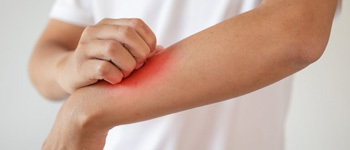 In this phase, the skin has already started treating itself but has developed flare-ups again as it was left untreated. This is the transitional stage between acute and chronic and develops cracks, itching, burning, redness, stinging in the skin, and so on.
In this phase, the skin has already started treating itself but has developed flare-ups again as it was left untreated. This is the transitional stage between acute and chronic and develops cracks, itching, burning, redness, stinging in the skin, and so on.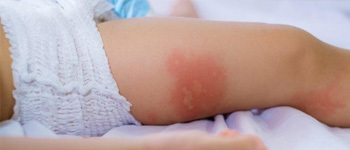 This is the most common stage and is found in infants below one year of age. This stage lasts throughout life with occasional flare-ups. It eases with age. The symptoms of this type include lines in the skin, discoloured, dark skin, itching, cracks, etc.
This is the most common stage and is found in infants below one year of age. This stage lasts throughout life with occasional flare-ups. It eases with age. The symptoms of this type include lines in the skin, discoloured, dark skin, itching, cracks, etc.
















